Why Windows Shell Experience Host Hogs My CPU And How To Stop It In Windows 10?
If you are a newbie to the topic of computer repair and maintenance, then chances are that you aren't yet aware of the fact that your Windows 10 PC has a super malicious process running in the backdrop. And the worst part is that this process will never ever allow you to uninstall it via regular means i.e. "Control Panel" or "Apps and Features" panel.
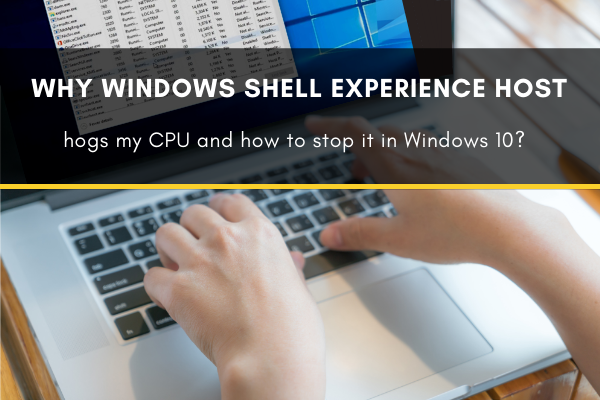
Windows Shell Experience Host (WSEH) was first introduced in Windows 10. Initially, it did cause many problems, but as Windows has gone through different versions those problems have stopped to a great extent. WSEH is a part of the Windows 10 system. It is not a virus and should not be stopped because it controls certain display elements on your Windows computer.
WSEH controls the Windows desktop background behavior, like changing the background when you have set it to a slide show. It also handles the Start menu and taskbar transparency, among other things. You could stop it from the Task Bar, but it will restart on its own.
But the question remains: why is WSEH hogging CPU usage on my computer?
Let us examine some reasons why this happens and how to sort them out.
First, check to see how WSEH is functioning. Right-click on the Taskbar and select Task Manager. When the Task Manager window opens, locate the Windows Shell Experience Host to see if it is using much of the CPU.
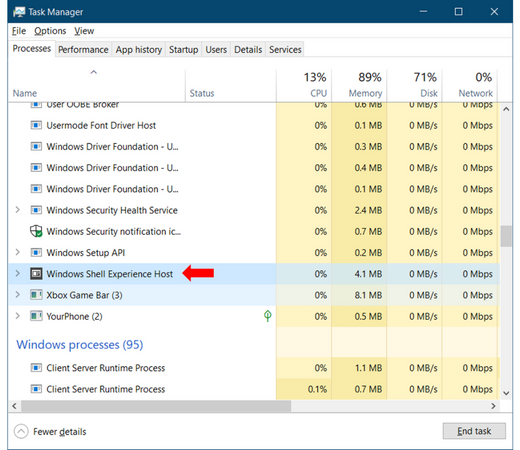
In the Task Manager window shown in the picture above, you can see that at this point it is using 0% of CPU and 4.1MB of memory, which is negligible. But if it shows a high percentage of CPU usage, it could be a temporary issue like the background picture changing or it could indicate a bigger problem.
If WSEH is using a lot of your CPU, here are some solutions.
1). Turn Background Slideshow off
WSEH could be using a lot of CPU and memory if you have set your desktop background to Slideshow. The solution is to try changing your desktop background to a static picture. Here’s how:
- Right-click on the desktop and select Personalize from the menu that pops up as shown below.

- Alternatively, press Windows + I, or click Start and select Settings to get to the Settings window and then select Personalize to see the following window:
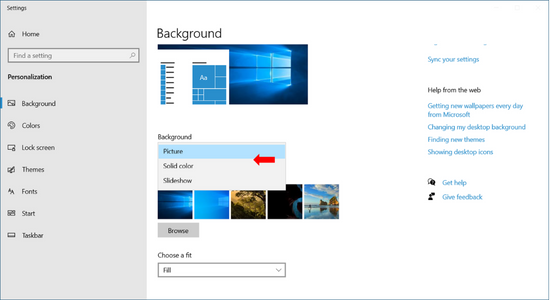 If you have selected Background to display as a Slideshow, change it to Picture or Solid color, by clicking on the Background drop-down menu.
If you have selected Background to display as a Slideshow, change it to Picture or Solid color, by clicking on the Background drop-down menu. - Close the settings window. This should sort the issue. However, if WSEH is still using a lot of CPU, try the next option in this list.
2). Turn ‘Automatically pick an accent color from my background’ off
- From the Personalization option in the Settings menu, select Colors. Scroll down till you come to the ‘Automatically pick an accent color from my background’ option:
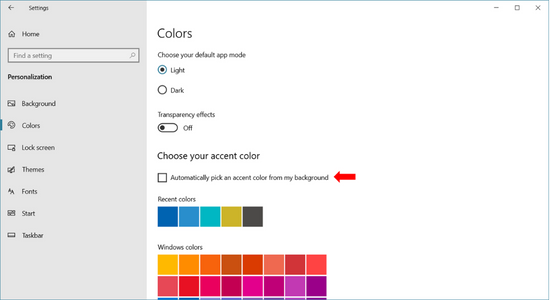
- Make sure it is unchecked. This should solve the problem. But if it persists, try the next option.
3). Check if Windows needs to be updated
- Open Settings and go to the Update & Security section to see the following:

- If it shows ‘You’re up to date’, you are OK. If not, update your system. You could click on the Check for updates button. If there are updates to download, download them. Your computer may restart on or more times as updates get installed.
- This could help solve the problem. If not, try the last option.
4). Run System File Checker
Sometimes the Windows registry gets damaged or might have been tweaked, thus causing a problem. This could cause issues with high CPU usage. To solve this, try running Microsoft’s System File Checker scan to clear out any registry issues. Make sure to back up your registry just in case you encounter problems.
- Click Start or press the Windows key. Then type command to see:
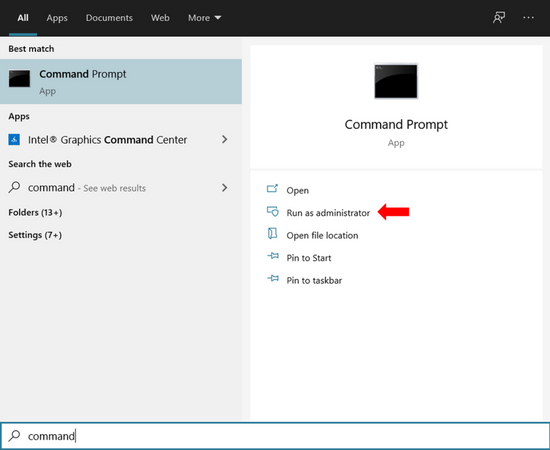
- Select Run as Administrator. After this, type sfc /scannow and press Enter to start the scan. The scanning may take time to complete.
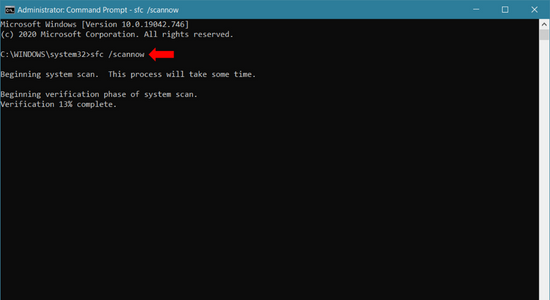
We hope this will solve the issue for you.
Summary: Why Windows Shell Experience Host hogs my CPU and how to stop it in Windows 10?
- The Windows Shell Experience Host process is normally a low priority background process that runs in the background to provide the host for other processes that need to run with elevated permissions. This makes it a potential target for malware and malicious attacks.
- In normal conditions, this shouldn't cause any problems but if something is wrong with the OS, this can get infected by something like a virus or some sort of spyware application. Section: What happens when you have malware on your system?
- This infection will try to do all sorts of evil things: from trying to access sensitive information, from acting as spyware, from slowing down important processes and whatnot.
- The main reason for its high CPU usage is due to its ability to evade security solutions and anti-viruses on your computer. It tries to slow down your computer as it won't be detected.
- As most viruses try to do is gain administrator rights so they can run without getting caught but this one really gets on my nerves!
- It's using my CPU power and slowing down important processes like Windows Update and Cortana! I know users who have reported that it's even causing their computer to run out of battery faster than normal!